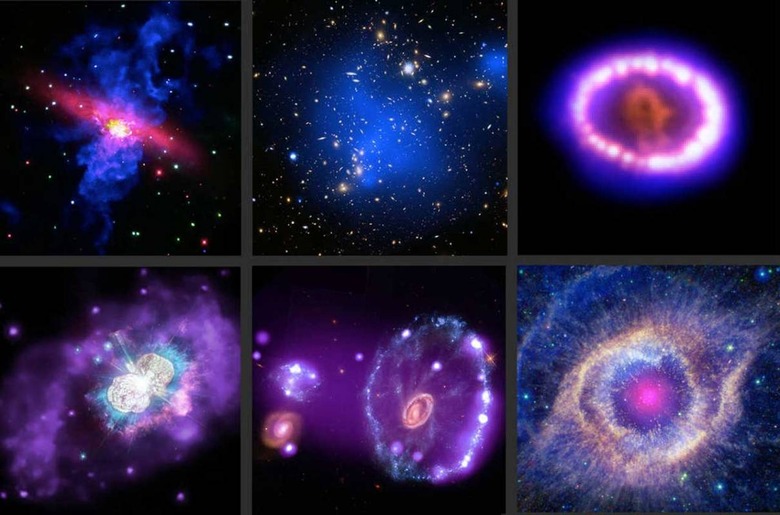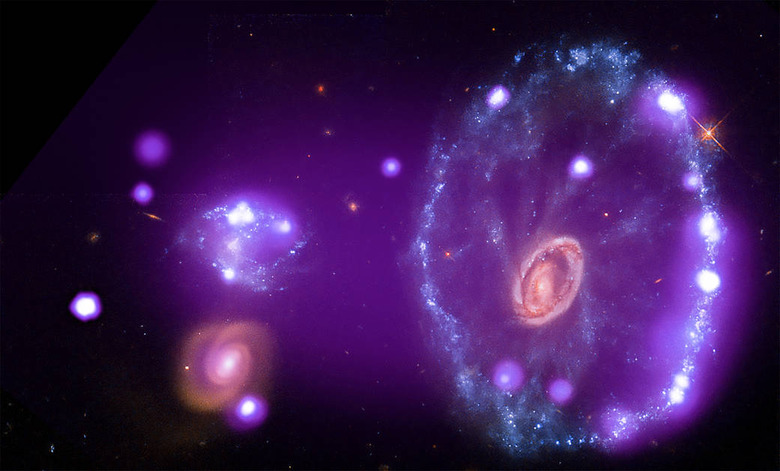NASA's Chandra X-Ray Observatory Has Created Some Incredible Photos
There are telescopes worldwide taking pictures of the heavens in different wavelengths allowing us to see some incredible objects. Telescopes around the world can look at space using wavelengths ranging from radio waves to gamma rays. The approach using "multiwavelength" observations is an extremely important part of astronomy to help scientists understand objects in space.The image below is a compilation of different observations made by the various missions and telescopes that NASA has combined to give a better understanding of the objects in the universe. Each of the images contains data from the NASA Chandra X-ray Observatory and other telescopes. The images show various celestial objects, including galaxies, supernova remnants, stars, and planetary nebulas.

All the images represent possibilities when data from across the electromagnetic spectrum is combined into a single image. Starting in the top row from left to right, we see Messier 82, which is a galaxy oriented edge-on to earth. The x-rays from Chandra appears blue and pink, optical data from the Hubble space telescope is seen in red and orange.
The next image is a galaxy cluster known as Abell 2744, held together by gravity. The following image is Supernova 1987A, one of the brightest supernova explosions seen in centuries. In the bottom row from left to right the images start with Eta Carinae. It is a volatile star system with two massive stars that orbit close to each other and could be the next supernova in the Milky Way.

Moving to the right is the Cartwheel Galaxy created when a smaller galaxy passed through the center of the object, and the violent shockwaves triggered large amounts of star formation. The last image is of the Helix Nebula, hinting at what will happen to our Sun in the distant future.
